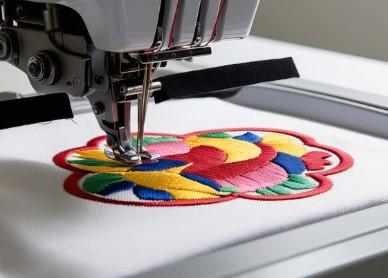The Cultural Significance of Handicraft in Modern Society

Handicraft, the art of creating objects by hand using traditional techniques 手工藝, holds a unique place in human culture. In an era dominated by mass production and automation, handicrafts serve as a reminder of the skill, creativity, and individuality inherent in human-made creations. From intricately woven textiles to hand-carved wooden sculptures, handicrafts embody cultural heritage, personal expression, and sustainable practices. This article explores the cultural significance of handicraft in modern society, examining its role in preserving traditions, fostering community, and promoting sustainability.
Handicraft as a Keeper of Cultural Heritage
Handicraft is more than just a method of creating objects; it is a vessel for cultural storytelling. Across the globe, artisans use techniques passed down through generations to craft items that reflect their community's history, beliefs, and values. For example, Native American beadwork often incorporates patterns that symbolize tribal identity or spiritual concepts, while Japanese pottery, such as Raku ware, reflects centuries-old aesthetic philosophies like wabi-sabi, which values imperfection and transience.
In many cultures, handicraft is a living archive. In rural India, for instance, women create intricate embroidery known as Kantha, which not only serves a functional purpose but also tells stories of daily life, folklore, or religious devotion. These pieces are often made with recycled materials, showcasing resourcefulness while preserving artistic traditions. By engaging in handicraft, artisans maintain a connection to their ancestors, ensuring that cultural knowledge is not lost to time.
Moreover, handicrafts often play a central role in cultural festivals and rituals. In Mexico, during the Day of the Dead, artisans craft colorful sugar skulls and papier-mâché figures, which are both decorative and symbolic. These creations are not merely objects but are imbued with cultural meaning, connecting communities to their shared history. In this way, handicraft acts as a bridge between the past and the present, keeping traditions alive in a rapidly modernizing world.
Fostering Community Through Handicraft
Handicraft is inherently a communal activity. Whether through family workshops, cooperative guilds, or community classes, the process of creating handmade goods often brings people together. In many societies, handicraft is a shared endeavor, where skills are taught through apprenticeships or informal gatherings. For example, in parts of Africa, basket weaving is a communal activity where women gather to weave intricate patterns while sharing stories and knowledge. This not only strengthens social bonds but also ensures the transmission of skills to younger generations.
In modern urban settings, handicraft has seen a resurgence through community workshops and maker spaces. Cities around the world now host knitting circles, pottery classes, and woodworking groups, where individuals come together to learn and create. These spaces foster a sense of belonging and provide an antidote to the isolation often experienced in digital-centric societies. Handicraft, in this context, becomes a way to reconnect with others, offering a tangible sense of accomplishment and shared creativity.
Furthermore, handicraft markets and fairs provide platforms for artisans to showcase their work, fostering economic and social connections. Events like the Santa Fe International Folk Art Market in the United States bring together artisans from diverse backgrounds, allowing them to share their crafts and stories with a global audience. Such gatherings highlight the universal appeal of handicraft, transcending cultural and linguistic barriers to create a sense of global community.
Handicraft and Sustainability
In an age of environmental consciousness, handicraft offers a sustainable alternative to mass-produced goods. Unlike factory-made products, which often rely on resource-intensive processes and contribute to pollution, handicrafts are typically made with locally sourced, natural materials. For example, artisans in Southeast Asia use bamboo, a fast-growing and renewable resource, to create everything from baskets to furniture. This not only reduces environmental impact but also supports local economies.
Handicraft also promotes slow production, emphasizing quality over quantity. A handwoven scarf, for instance, may take days or even weeks to complete, but its durability and uniqueness far surpass those of a machine-made equivalent. By valuing craftsmanship over disposability, handicraft encourages consumers to invest in items that last, reducing the cycle of waste associated with fast fashion and throwaway culture.
Additionally, many handicraft practices incorporate upcycling or recycling. In regions like South America, artisans create vibrant rugs and bags from discarded plastic or fabric scraps, turning waste into functional art. This ingenuity aligns with modern sustainability goals, making handicraft a model for environmentally conscious production.
Challenges and Opportunities
Despite its many benefits, handicraft faces challenges in the modern world. The rise of cheap, mass-produced goods has made it difficult for artisans to compete economically. Many traditional crafts are at risk of disappearing as younger generations pursue more lucrative careers in urban areas. However, the growing
2.
The Therapeutic Benefits of Handicraft in Everyday Life
In today’s fast-paced, technology-driven world, finding moments of calm and focus can be challenging. Handicraft, the practice of creating objects by hand using traditional techniques, offers a powerful way to reconnect with oneself and find mental and emotional balance. From knitting and pottery to woodworking and embroidery, handicrafts provide not only creative outlets but also significant therapeutic benefits. This article explores how engaging in handicraft can enhance mental well-being, improve physical health, and foster personal growth.
Handicraft as a Form of Mindfulness
Handicraft is inherently a mindful activity. The repetitive, tactile nature of tasks like knitting a scarf or shaping clay on a potter’s wheel requires focus and presence, drawing the mind away from daily stresses. This meditative quality is similar to mindfulness practices, which emphasize being fully present in the moment. For example, studies have shown that activities like crocheting can reduce cortisol levels, the hormone associated with stress, by engaging the brain in a rhythmic, calming process.
When individuals engage in handicraft, they often enter a state of "flow," a psychological state where they are fully immersed in an activity. This state, described by psychologist Mihaly Csikszentmihalyi, is associated with increased happiness and reduced anxiety. Whether it’s the steady rhythm of weaving or the careful precision of carving, handicraft provides a structured yet creative space for individuals to lose themselves in their work, offering a reprieve from the constant distractions of modern life.
Emotional Healing Through Creative Expression
Handicraft手工藝 also serves as a powerful tool for emotional expression. Creating something tangible allows individuals to process complex feelings in a safe, non-verbal way. For instance, someone grieving may find solace in quilting, where each stitch can represent a memory or emotion. Art therapy programs often incorporate handicraft activities like beading or collage-making to help participants explore and express their emotions.
In mental health settings, handicraft has been used to support individuals with conditions such as depression, anxiety, and post-traumatic stress disorder (PTSD). For example, veterans participating in woodworking programs have reported improved mood and a greater sense of purpose. The act of creating something with one’s hands fosters a sense of accomplishment and self-worth, which can be particularly valuable for those struggling with mental health challenges.
Physical Benefits of Handicraft
Beyond its mental and emotional benefits, handicraft can also contribute to physical well-being. Many handicraft activities, such as knitting or sculpting, involve fine motor skills that improve dexterity and hand-eye coordination. For older adults, engaging in these activities can help maintain mobility and reduce the risk of conditions like arthritis. Occupational therapists often recommend handicraft as a way to strengthen muscles and improve coordination in patients recovering from injuries or surgeries.
Moreover, handicraft can promote relaxation, which has broader health benefits. The repetitive motions involved in activities like spinning yarn or hand-sewing can lower heart rate and blood pressure, mimicking the effects of meditation or deep breathing exercises. For individuals with chronic pain or fatigue, handicraft offers a low-impact way to stay active and engaged without overexertion.
Building Confidence and Community
Engaging in handicraft can also boost self-esteem and foster a sense of achievement. Completing a handmade project, whether it’s a knitted blanket or a carved wooden box, provides tangible proof of one’s abilities. This can be especially empowering for individuals who feel overwhelmed by the demands of daily life or lack confidence in other areas. The process of learning a new craft, overcoming challenges, and mastering techniques builds resilience and a growth mindset.
Handicraft also creates opportunities for social connection. Joining a crafting group or attending a workshop allows individuals to share their passion, learn from others, and build meaningful relationships. For example, quilting bees, historically popular in the United States, were not only about creating blankets but also about fostering community among women. Today, online platforms and local craft groups continue this tradition, offering spaces for collaboration and support.
Accessibility and Inclusivity
One of the greatest strengths of handicraft is its accessibility. Many crafts require minimal materials and can be adapted to suit different skill levels or physical abilities. For example, simple weaving projects can be done with inexpensive looms, while paper-based crafts like origami require only a sheet of paper. This makes handicraft an inclusive activity that people of all ages, backgrounds, and abilities can enjoy.
Furthermore, handicraft can be tailored to individual needs. For those with limited mobility, adaptive tools like ergonomic knitting needles or larger looms can make participation easier. In educational settings, handicraft is often used to engage children with learning disabilities, as it provides a hands-on, sensory-rich way to develop focus and creativity.
Conclusion
Handicraft is far more than a hobby; it is a pathway to mental, emotional, and physical well-being. By fostering mindfulness, enabling emotional expression, promoting physical health, and building community, handicraft offers a holistic approach to self-care. In a world that often feels disconnected and overwhelming, the simple act of creating with one’s hands can provide a sense of purpose, calm, and connection. Whether you’re a seasoned artisan or a beginner picking up a needle for the first time, handicraft invites you to slow down, create, and discover the therapeutic power of making something by hand.
—--
- Art
- Causes
- Best Offers
- Crafts
- Dance
- Drinks
- Film
- Fitness
- Food
- Giochi
- Festival
- Gardening
- Health
- Home
- Literature
- Music
- Networking
- Altre informazioni
- Party
- Religion
- Shopping
- Sports
- Theater
- Wellness



